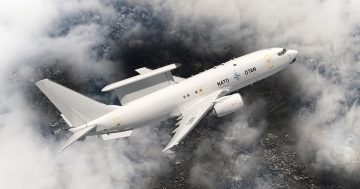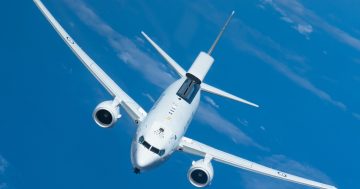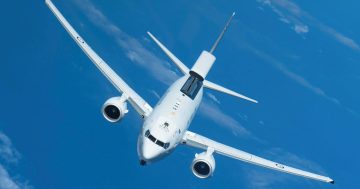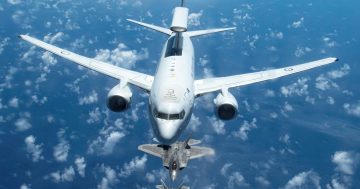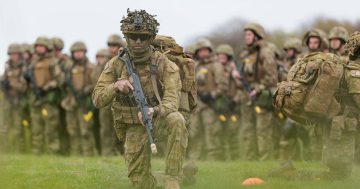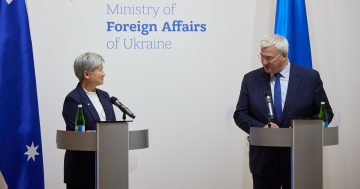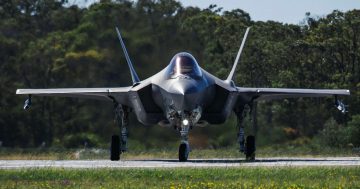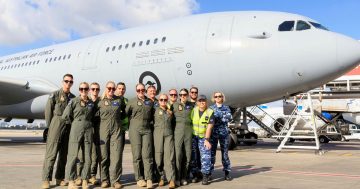
A Royal Australian Air Force E-7A Wedgtail aircraft from No. 2 Squadron on the runway at Tindal in the Northern Territory. Photo: ADF.
The Royal Australian Air Force has been tasked to deploy a Boeing E-7A Wedgetail Airborne Early Warning & Control (AEW&C) aircraft and 100 support personnel to Germany to provide airspace management duties for flights operating near Ukraine.
The six-month deployment will see the aircraft – which features a large surfboard-shaped radar on its upper fuselage – conduct patrols to monitor military and commercial flights operating in the airspace over eastern Europe, Belarus, the Baltic States, the Black Sea and western Ukraine.
Despite no commercial flights currently operating over Ukraine due to the ongoing war, these flights often skirt the border regions, while numerous military aircraft – including Australian C-17A transports – are operating into the city of Rzeszów in eastern Poland carrying weapons, ammunition and humanitarian aid for the Ukrainian war effort.
Other military aircraft operating around the Ukrainian border areas include NATO long-range crewed and uncrewed surveillance aircraft, air-to-air refuellers, and even fighter jets that are on patrol to counter possible aggression by Russian aircraft.
A ministerial release says the E-7A will integrate with the efforts of the US and other partners, and support the multi-layered protections in place for assistance into Ukraine.
What the release doesn’t say is, as the most capable AEW&C aircraft in service anywhere in the world, the RAAF’s E-7A has the ability to ‘see’ deep into Ukrainian, Belarussian and Russian airspace using its powerful radar and electronic support measures (ESM) systems.
These systems are able to identify and track aircraft, drones and cruise missiles from well over 300 kilometres away – long before other systems are able to – and share that data in real time with other airborne, ground-based and maritime systems.
“The deployment of the E-7A Wedgetail as an additional early warning capability will help ensure that vital support flowing to Ukraine by the international community is protected,” Deputy Prime Minister and Defence Minister Richard Marles said in the release.
“Australia is committed to ensuring Ukraine’s sovereignty and territorial integrity prevails against Russia’s assault on the rules-based order,” he said.
Foreign Minister Penny Wong added, “Australia’s E-7A Wedgetail deployment is a further demonstration of our support for Ukraine. Australia stands with Ukraine to empower its people to end Russia’s illegal, immoral war.”
The Wedgetail will likely operate in a rotation with other NATO AEW&C aircraft such as the E-3 AWACS operated by the US, France, and a joint NATO force based in Germany, France and the Netherlands respectively, and Turkish E-7s.
The RAAF operates six Wedgetails operated by No. 2 Squadron based at Williamtown near Newcastle. The aircraft were acquired in the early 2000s as part of Project AIR 5077. Australia was the lead customer for the then-new aircraft and experienced a number of program delays due to teething troubles with the revolutionary radar and ESM systems.
But after the E-7A entered service in 2010, it has gone on to record an enviable operational record in the Middle East, and has prompted both the UK and US to order it to replace their E-3 fleets.
The aircraft carries a crew of 10 and has an endurance of about eight hours, or up to 14 hours with air-to-air refuelling.
The ministerial release stresses that the E-7A will not be operating in Ukrainian airspace, nor will any of the RAAF’s personnel be directly involved in the conflict.












